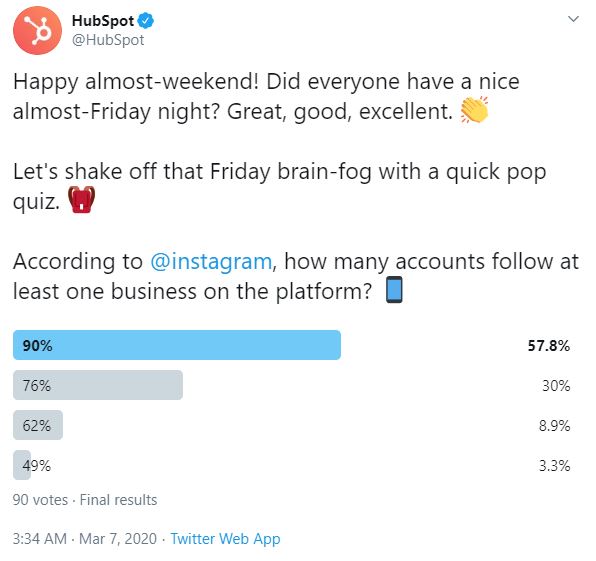Venturing into the online world is crucial for virtually any business operating today. Gone are the days when marketing meant distributing posters, fliers, leaflets, and tarpaulins in crowded places. The Internet has leveled the playing field, so anyone and everyone can join the endless battle for attention in the huge market of Internet users.
Establishing your company’s online presence is a MUST and a continuous, long term process. But first things first, let’s focus on the foundational step of this very long journey: setting it all up.
-
Claim Your Cyber Real Estate
Think of your website as your business address. If you want your business to be found, your address has to be visible and accessible on the world wide web.
-
Register your Domain Name
Choose a good domain registrar company and buy the domain name/s that will best represent your business. It’s also recommended that you purchase all domain variations like .net, .org, .biz, etc. to prevent cybersquatting.
Subscribe to a good hosting plan and set up your website. If you don’t know how to do this, there are many website developers that offer packages that may suit your budget well. Make sure your website has the basic pages: homepage, company profile, products/services, and contact information. Publish the most informative content as possible to let first-time visitors know who you are.
-
Set up a Blog
If your website is your home, your blog is your living room. This is where most of your visitors will land and where potential clients get a glimpse of who you are.
Pretty much all Fortune 500 companies have their own company blogs. Even small and medium enterprise businesses (SMEs) have one most of the time. Companies with blogs tend to exude a more credible, trustworthy and authoritative reputation in their respective industries. Not to mention the fact that marketers who prioritize blogging are 13x more likely to have a positive ROI on their efforts.
Just make sure you’re keeping things fresh by publishing new material regularly for both your readers to consume and search engines to index.
-
Create an Email Address with Your Domain
Try to veer away from using free email addresses (@gmail, @yahoo, @hotmail). Having your domain name in your email address (i.e. yourname@yourbusinessname.com) gives the impression that you mean business.
Associating the name of your business to your email address also improves branding, which helps people remember your company better. It’s also a lot more trustworthy to have a business email, as it shows that your emails aren’t coming from free, public accounts.
-
Choose a Unique Handle
This isn’t always possible, but we highly recommend having a unique handle that you can use across all your online channels. This means choosing a social media handle that’s consistent with, say, your URL or your company name.
For example:
There are several reasons why you want to do this. First, it avoids confusion. Visitors can easily find you without confusing you with other similarly named brands. This is also handy for people who like cross-posting across several social media channels. Ex: tagging you @mybrand on instagram will automatically tag you @mybrand on Twitter should you want to reshare your content.
-
Get to Know Your Neighborhood
You don’t have to be active on all social networks if you know which ones you want to prioritize. See where your audience is and establish an online presence on those platforms. For instance, the professional business community more likely frequents LinkedIn and sometimes Twitter. Meanwhile, retail consumers generally frequent Facebook, Pinterest, and Instagram.
-
Facebook
Globally, there are more than 2.4 billion monthly active Facebook users. Facebook is one of the most popular paid distribution networks B2B marketers (84%) use for content marketing purposes. The platform allows marketers to build a more personal relationship with their audience and grow their community.
You can share relevant content (mix of your own blog posts and industry news from trusted sites) and industry news, as well as prompt posts that get the conversation started to encourage your followers to engage.
-
Twitter
Twitter is an excellent tool to build a community. Statistics show that businesses who are on Twitter generate twice the number of leads compared to those not on the platform.
HubSpot uses Twitter Polls to encourage audience engagement like the example below.

To get started, setup a Twitter account for your brand and start following people and business entities that you would want to be associated with. Follow your customers, business partners, suppliers, contractors, vendors, your competitors and peers. Start tweeting information, links, photos, videos that you think may be relevant to your community’s areas of interest.
Finally, be part of the conversation. Your success on social media on how much you’re able to engage with others, so you really need to participate and spur on user interactions.
-
LinkedIn
LinkedIn currently has over 500 million members and around 94% of B2B marketers use LinkedIn for their content marketing strategy. Such is the power of the world’s biggest professional network. Furthermore, people consider LinkedIn to be 3x as trustworthy for delivering worthwhile content. It’s the social network where people interact in a professional and corporate environment, so having a LinkedIn presence shows that you are a legitimate entity with professional networks.
Profile pages serve as online resumes. Likewise, LinkedIn company profiles showcase your company’s story, products and services, content, as well as the types of industries and professionals your company is associated with. It also serves as a valuable lead generation channel since many decision-makers frequently use the platform.
-
Instagram
Instagram is a social network known for its visual nature, which is beneficial for marketing in specific niches. Over 200 million Instagram users visit at least one business profile a day, while 60% say they discover new products on the social platform.
Instagram is a great platform to highlight your company’s culture, boost brand visibility, encourage engagement, and direct traffic to your site. Sprout Social uses Instagram to share their company culture and introduce their team members.

The tricks to succeeding on Instagram are producing high-quality emotion-inducing visuals, using hashtags strategically, and interacting with other like-minded brands and individuals.
-
Engage, Interact, and Nurture Relationships
The next phase of establishing and maintaining your online presence is to devise a solid online marketing strategy to attract, engage, and build meaningful relationships with your target audience.
Essentially, you need to develop and roll out fresh content, connect with new and existing audiences, and accept feedback. All the while working to expand those communities. It’s all about letting your customers know that your business exists, cares and listens.
Below are some practical tips for an effective digital marketing strategy.
- Understand your target audience – You need to know where your audiences are and what type of content they like to consume. This way, you’ll know what types of content they’ll likely engage with. Do they engage more with video content, infographics, Q&A type of posts, quizzes, or user-generated content?
- Create a content plan – You don’t want any of your content to go to waste, do you? Your content plan for your social media marketing should have a good mix of engaging content and promotional content. Also, ensure that it is aligned with your content marketing (i.e., blog posts, eBooks, etc.)
- Be flexible when it comes to content type – You don’t have to stick with producing blog posts. You can experiment with infographics, video (e.g., company explainers, brand stories, how-to videos), listicles, eBooks, and more. Then, share them on your social media channels along with enticing post copy.
- See what your competitors are doing – If one of your top competitors seems to perform well online, why not take a peek at their strengths? Likewise, you can learn from their weaknesses to help find opportunities and develop improved strategies for your brand.
-
Capture Leads
Leveling up your online presence means reaching out and raking in. It’s not enough that your business exists online. The most important thing, especially for B2B, is capturing leads, nurturing them, and eventually converting them to paying customers.
You can start capturing leads with lead magnets like eBooks, reports, and webinars. Here’s a quick rundown on what you should be doing:
- Use a landing page software to create custom landing pages with lead form capture.
- Write original content related to your business, product, or services, then give it away for free when they sign up to your email list.
- Incorporate an exit-intent popup. This email-lead popup is triggered when a visitor is about to close a tab. The user then has to stop and see what appeared on their screen.
Don’t underestimate the value of getting email addresses as 47% of marketers rate email marketing as the most effective marketing channel.
-
Optimize Your Website Pages
Your website needs to be optimized to generate traffic, rank well on SERPs, capture leads, and convert customers. Otherwise, you’re just standing in a crowded room handing out fliers. Having a well-tuned website can bring about more opportunities to convert prospects.
Your goals for SEO and UX are relatively the same: serve the best and most valuable content for your audience and build a positive user experience. Here’s a quick look at what you can do:
- Improve your page speed – Page speed optimization is the number one technical SEO fix for improving site performance. Slow page speed means a poor user experience.
- Update your content marketing strategy – Produce long, rich, and expertly-written content that’s optimized for your target audience’s interests.
- Improve off-page SEO – This refers to guest blogging, social media efforts, brand mentions, and link building. Earn backlinks from authoritative sources to help your site rank better.
- Improve your on-page SEO – This pertains to the content on your pages like headings, subheadings, meta descriptions, and more.
- Optimize for mobile – More and more people are searching and accessing websites using mobile devices. You can adopt a responsive design for your website that adjusts the layout depending on where your visitor views your page.
Summing it Up
Knowing your business goals is one thing. Making sure that your digital marketing efforts reflect those objectives is another. Plus, building your online presence isn’t as easy as creating a website, signing up to different social media platforms, and developing content materials for you to call it a day. You need to keep watch of your target audience and build your marketing campaigns around them.
Establishing your online visibility is a lot of work. If you need help with your brand’s online engagement and lead generation, get in touch with us to learn more about our growth marketing services. We custom design digital campaigns backed by data to make sure your brand gets seen by the people who matter. Your future customers.






